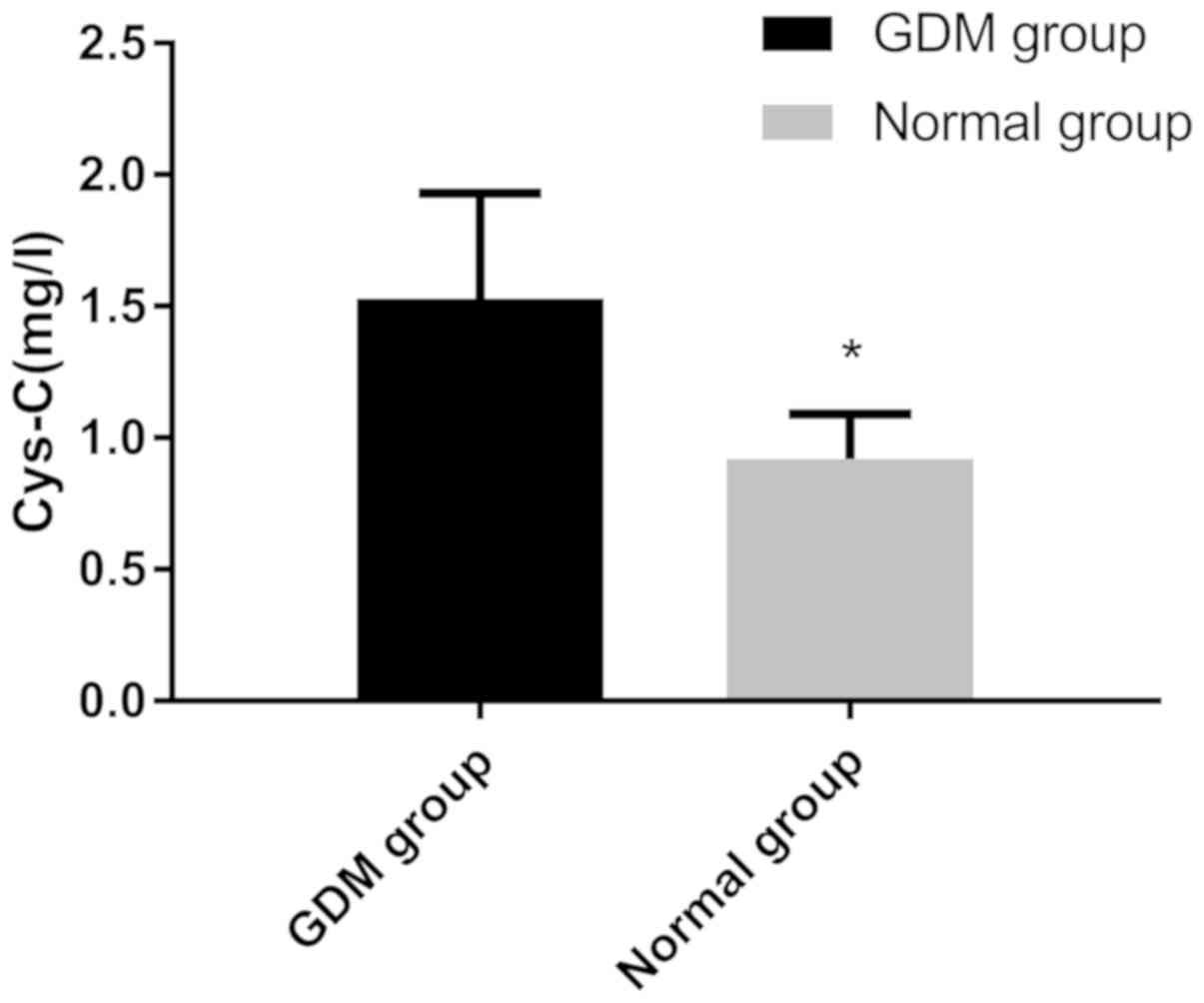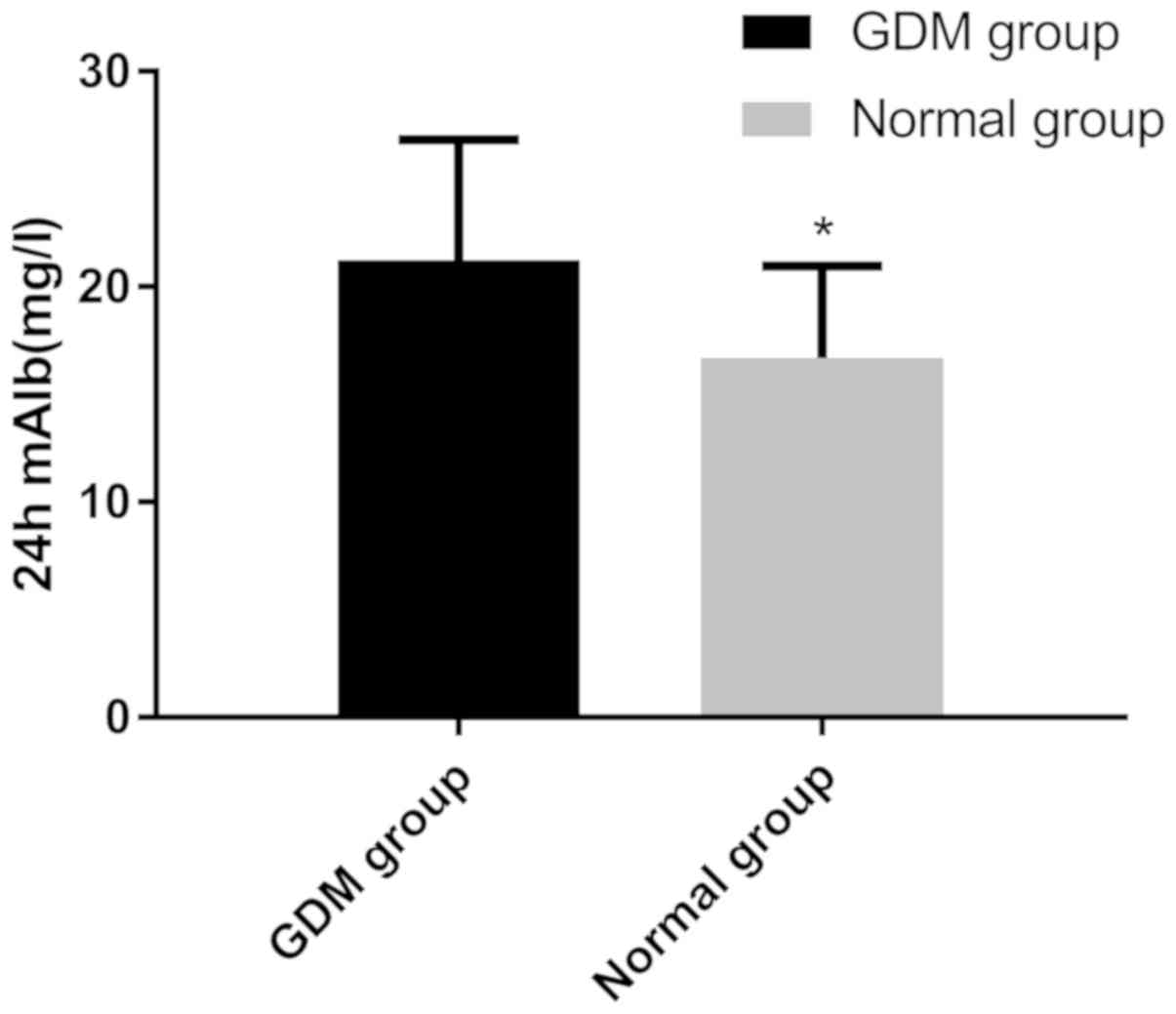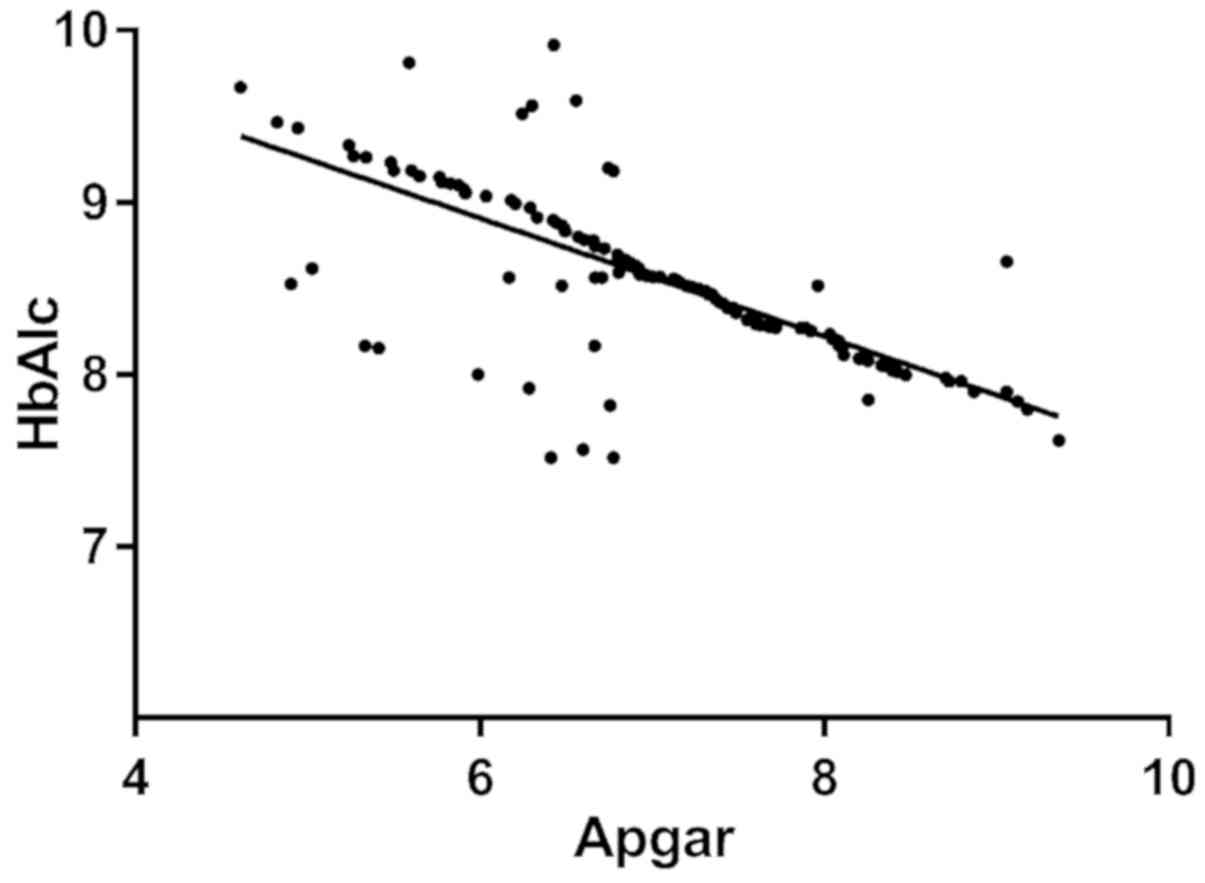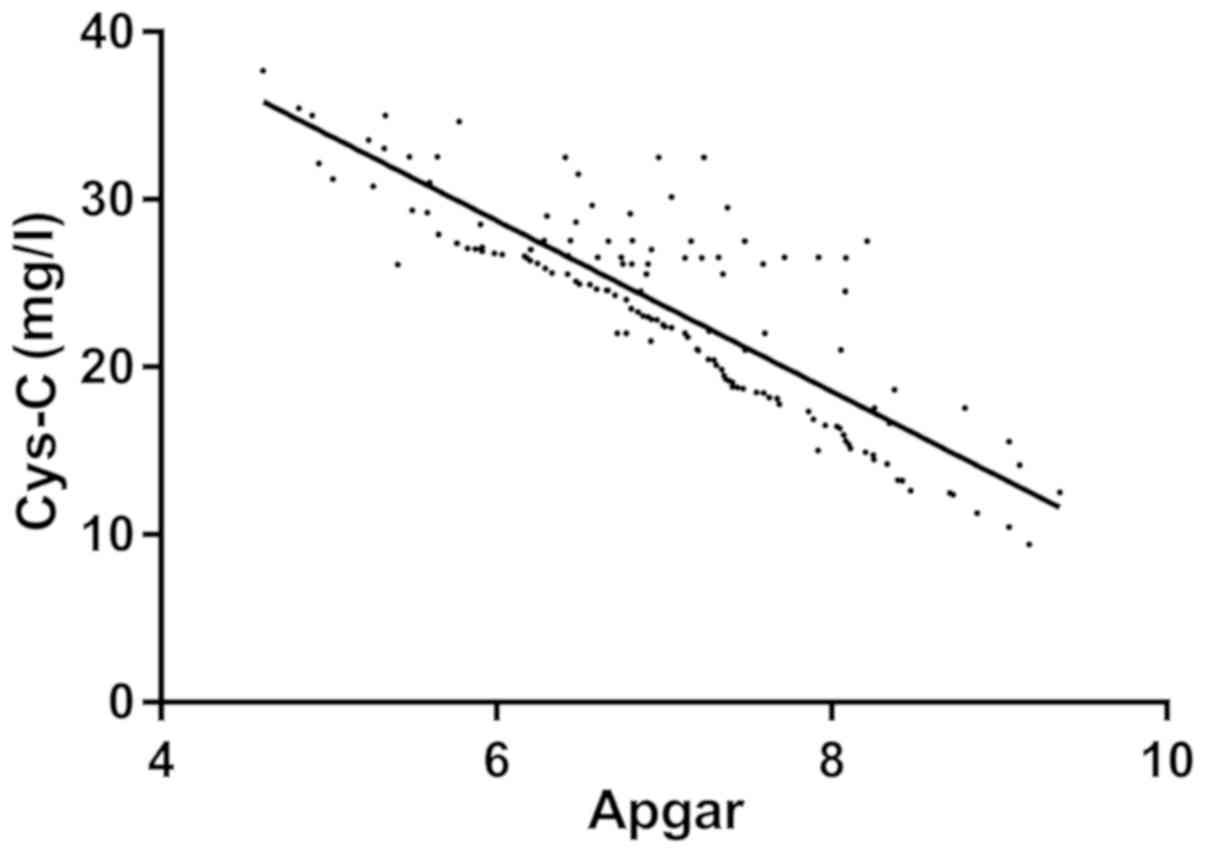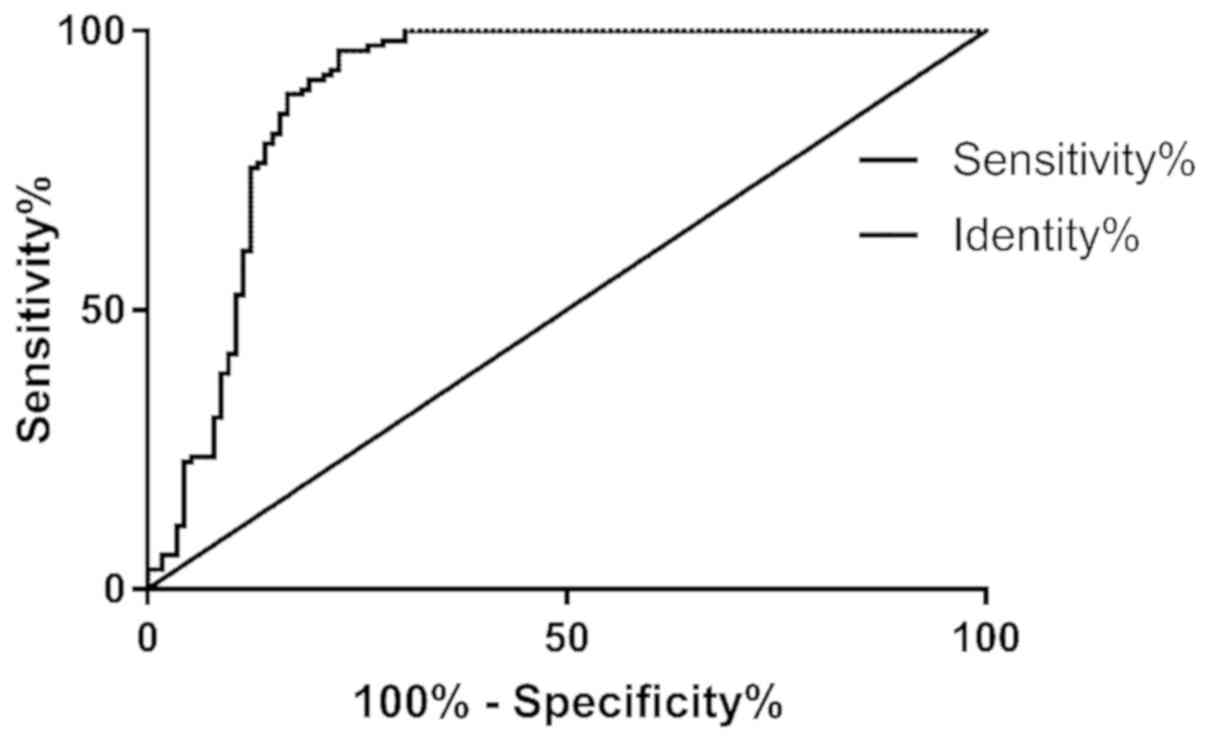|
1
|
Spaight C, Gross J, Horsch A and Puder JJ:
Gestational diabetes mellitus. Endocr Dev. 31:163–178. 2016.
View Article : Google Scholar : PubMed/NCBI
|
|
2
|
Euser AG, Hammes A, Ahrendsen JT, Neshek
B, Weitzenkamp DA, Gutierrez J, Koivunen P, Julian CG and Moore LG:
Gestational diabetes prevalence at moderate and high altitude. High
Alt Med Biol. 19:367–372. 2018. View Article : Google Scholar : PubMed/NCBI
|
|
3
|
Senat MV and Deruelle P: Gestational
diabetes mellitus. Gynecol Obstet Fertil. 44:244–247. 2016.(In
French). View Article : Google Scholar : PubMed/NCBI
|
|
4
|
Damm P, Houshmand-Oeregaard A, Kelstrup L,
Lauenborg J, Mathiesen ER and Clausen TD: Gestational diabetes
mellitus and long-term consequences for mother and offspring: A
view from Denmark. Diabetologia. 59:1396–1399. 2016. View Article : Google Scholar : PubMed/NCBI
|
|
5
|
Schoenaker DA, Mishra GD, Callaway LK and
Soedamah-Muthu SS: The role of energy, nutrients, foods, and
dietary patterns in the development of gestational diabetes
mellitus: A systematic review of observational studies. Diabetes
Care. 39:16–23. 2016. View Article : Google Scholar : PubMed/NCBI
|
|
6
|
Lu M, Xu Y, Lv L and Zhang M: Association
between vitamin D status and the risk of gestational diabetes
mellitus: A meta-analysis. Arch Gynecol Obstet. 293:959–966. 2016.
View Article : Google Scholar : PubMed/NCBI
|
|
7
|
Rudland VL, Hinchcliffe M, Pinner J, Cole
S, Mercorella B, Molyneaux L, Constantino M, Yue DK, Ross GP and
Wong J: Identifying glucokinase monogenic diabetes in a multiethnic
gestational diabetes mellitus cohort: New pregnancy screening
criteria and utility of HbA1c. Diabetes Care. 39:50–52. 2016.
View Article : Google Scholar : PubMed/NCBI
|
|
8
|
Baack ML, Forred BJ, Larsen TD, Jensen DN,
Wachal AL, Khan MA and Vitiello PF: Consequences of a maternal
high-fat diet and late gestation diabetes on the developing rat
lung. PLoS One. 11:e01608182016. View Article : Google Scholar : PubMed/NCBI
|
|
9
|
Sherwani SI, Khan HA, Ekhzaimy A, Masood A
and Sakharkar MK: Significance of HbA1c test in diagnosis and
prognosis of diabetic patients. Biomark Insights. 11:95–104. 2016.
View Article : Google Scholar : PubMed/NCBI
|
|
10
|
Pottel H, Delanaye P, Schaeffner E,
Dubourg L, Eriksen BO, Melsom T, Lamb EJ, Rule AD, Turner ST and
Glassock RJ: Estimating glomerular filtration rate for the full age
spectrum from serum creatinine and cystatin C. Nephrol Dial
Transplant. 32:497–507. 2017.PubMed/NCBI
|
|
11
|
Zhu Y and Zhang C: Prevalence of
gestational diabetes and risk of progression to type 2 diabetes: A
global perspective. Curr Diab Rep. 16:72016. View Article : Google Scholar : PubMed/NCBI
|
|
12
|
Dipalo M, Buonocore R, Gnocchi C, Picanza
A, Aloe R and Lippi G: Analytical evaluation of Diazyme
procalcitonin (PCT) latex-enhanced immunoturbidimetric assay on
Beckman Coulter AU5800. Clin Chem Lab Med. 53:593–597. 2015.
View Article : Google Scholar : PubMed/NCBI
|
|
13
|
Ray JG, Medcalf KE and Park AL:
Association of newborn Apgar score with maternal admission to the
intensive care unit. JAMA Pediatr. 170:88–89. 2016. View Article : Google Scholar : PubMed/NCBI
|
|
14
|
Rani PR and Begum J: Screening and
diagnosis of gestational diabetes mellitus, where do we stand. J
Clin Diagn Res. 10:QE01–QE04. 2016.PubMed/NCBI
|
|
15
|
Sovio U, Murphy HR and Smith GC:
Accelerated fetal growth prior to diagnosis of gestational diabetes
mellitus: A prospective cohort study of nulliparous women. Diabetes
Care. 39:982–987. 2016. View Article : Google Scholar : PubMed/NCBI
|
|
16
|
Nahum Sacks K, Friger M, Shoham-Vardi I,
Abokaf H, Spiegel E, Sergienko R, Landau D and Sheiner E: Prenatal
exposure to gestational diabetes mellitus as an independent risk
factor for long-term neuropsychiatric morbidity of the offspring.
Am J Obstet Gynecol. 215:380.e1–7. 2016. View Article : Google Scholar
|
|
17
|
Muralimanoharan S, Maloyan A and Myatt L:
Mitochondrial function and glucose metabolism in the placenta with
gestational diabetes mellitus: Role of miR-143. Clin Sci (Lond).
130:931–941. 2016. View Article : Google Scholar : PubMed/NCBI
|
|
18
|
Retnakaran R and Shah BR: Role of type 2
diabetes in determining retinal, renal, and cardiovascular outcomes
in women with previous gestational diabetes mellitus. Diabetes
Care. 40:101–108. 2017. View Article : Google Scholar : PubMed/NCBI
|
|
19
|
Marso SP, Bain SC, Consoli A, Eliaschewitz
FG, Jódar E, Leiter LA, Lingvay I, Rosenstock J, Seufert J, Warren
ML, et al: Semaglutide and cardiovascular outcomes in patients with
type 2 diabetes. N Engl J Med. 375:1834–1844. 2016. View Article : Google Scholar : PubMed/NCBI
|
|
20
|
Karges B, Kapellen T, Wagner VM,
Steigleder-Schweiger C, Karges W, Holl RW and Rosenbauer J; DPV
Initiative, : Glycated hemoglobin A1c as a risk factor for severe
hypoglycemia in pediatric type 1 diabetes. Pediatr Diabetes.
18:51–58. 2017. View Article : Google Scholar : PubMed/NCBI
|
|
21
|
Faruque LI, Wiebe N, Ehteshami-Afshar A,
Liu Y, Dianati-Maleki N, Hemmelgarn BR, Manns BJ and Tonelli M;
Alberta Kidney Disease Network, : Effect of telemedicine on
glycated hemoglobin in diabetes: A systematic review and
meta-analysis of randomized trials. CMAJ. 189:E341–E364. 2017.
View Article : Google Scholar : PubMed/NCBI
|
|
22
|
Lau L, Al-Ismaili Z, Harel-Sterling M,
Pizzi M, Caldwell JS, Piccioni M, Lands LC, Mottes T, Devarajan P,
Goldstein SL, et al: Serum cystatin C for acute kidney injury
evaluation in children treated with aminoglycosides. Pediatr
Nephrol. 32:163–171. 2017. View Article : Google Scholar : PubMed/NCBI
|
|
23
|
Hughes RC, Moore MP, Gullam JE, Mohamed K
and Rowan J: An early pregnancy HbA1c ≥5.9% (41 mmol/mol) is
optimal for detecting diabetes and identifies women at increased
risk of adverse pregnancy outcomes. Diabetes Care. 37:2953–2959.
2014. View Article : Google Scholar : PubMed/NCBI
|
|
24
|
Qiu X, Qiu Y, Dai Y, et al: A research of
correlation between renal damage of patients with gestational
diabetes mellitus and level of serum cystatin C. International
Journal of Laboratory Medicine. 10:1289–1290. 2014.
|
|
25
|
Chawla R and Malik S: Microalbuminuria
detected at mid term as a marker for adverse pregnancy outcome. Int
J Health Sci Res. 8:41–52. 2018.
|
|
26
|
Bargnoux AS, Piéroni L, Cristol JP, Kuster
N, Delanaye P, Carlier MC, Fellahi S, Boutten A, Lombard C,
González-Antuña A, et al: Multicenter evaluation of cystatin C
measurement after assay standardization. Clin Chem. 63:833–841.
2017. View Article : Google Scholar : PubMed/NCBI
|
|
27
|
Fitzpatrick KE, Tuffnell D, Kurinczuk JJ
and Knight M: Incidence, risk factors, management and outcomes of
amniotic-fluid embolism: A population-based cohort and nested
case-control study. BJOG. 123:100–109. 2016. View Article : Google Scholar : PubMed/NCBI
|




